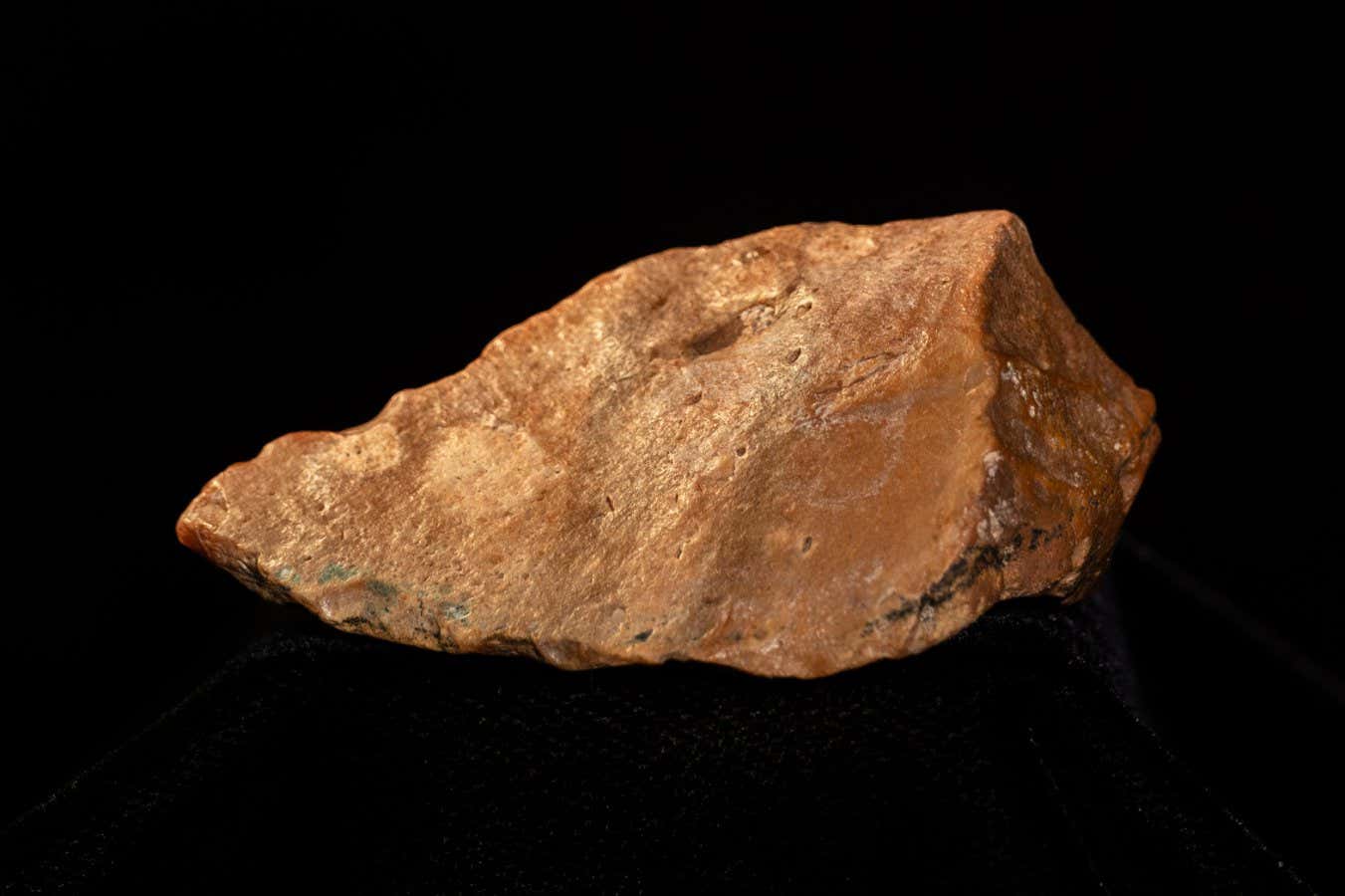The Indonesian island of Sulawesi was a likely stepping stone for ancient hominins to reach nearby Flores, the home of the mysterious Homo floresiensis
By James Woodford
6 August 2025
A stone tool found on Sulawesi, Indonesia, made by an unknown ancient hominin
Budianto Hakim et al.
Seven stone tools found on the Indonesian island of Sulawesi are the earliest evidence ever discovered of ancient humans making a sea crossing, dating back up to 1.4 million years.
They may provide clues to how a tiny human species, nicknamed “hobbits”, ended up on the nearby island of Flores.
Read more
Survival of the friendliest? Why Homo sapiens outlived other humans
The first of the artefacts was found embedded in a sandstone outcrop at a site called Calio by Budianto Hakim at the National Research and Innovation Agency in Indonesia in 2019, and a full excavation uncovered six more tools in the same outcrop.
In the same deposit as the stone tools, Hakim and his colleagues found part of the upper jaw, with teeth, of an extinct giant pig known as Celebochoerus, along with a tooth fragment from an unidentifiable species of juvenile elephant.
While the researchers couldn’t directly date the stone tools, they were able to come up with an estimated age of between 1.04 million and 1.48 million years old by analysing the sediments and the fossil pig’s teeth. Until now, evidence of hominins on Sulawesi only stretched back to 194,000 years ago.
